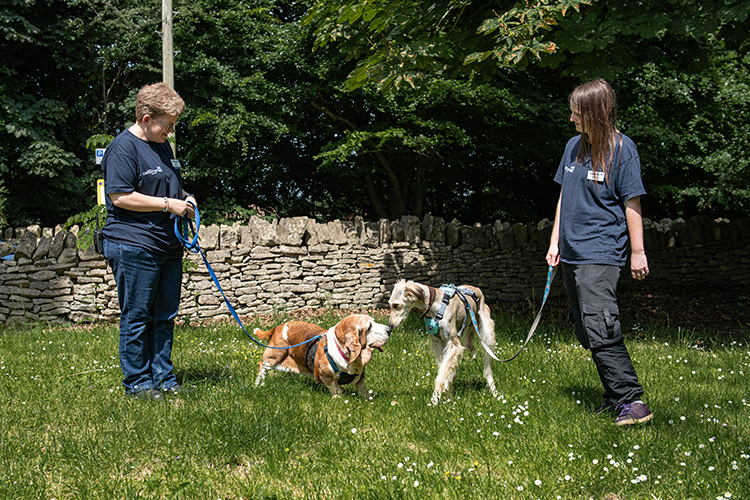New cat
How to set up your home to help your new cat settle in quickly
Cats, Adopters, Cat behaviour, Kitten

Most dogs want to meet others and it is important for them to have the opportunity to display their natural social behaviours and improve their doggie greetings. These meetings will occur both on and off lead, but generally it is sensible to ensure your dog meets other dogs politely on lead before letting them meet off lead.
What if there are problems?
Keep meetings short – count to 3 in your head and then ask your dog to ‘Walk on’ or ‘Let’s go’ in a positive cheery way. Keep the lead at a steady tension as you walk away. When your dog comes with you willingly, be sure to give him plenty of fuss and praise.
Do not panic if either dog growls, raises their hackles or snaps a little. This is perfectly normal and is just their way of communicating with each other.
Look out for these body language signals that shows a dog is uncertain, and take action to give them more space from each other.
If you know another dog who is calm, quiet and easy-going, ask their owner to go on a walk with you and your dog and practice.
Parallel walking
This means that you do not actually meet the other dog, but you walk in a line parallel with it, at whatever distance your dog can cope with (i.e. looks comfortable and does not show any nervous body language). Walking in parallel is the least threatening, least confrontational type of walking we can do with our dogs.
You may need to start with both owners walking in between the dogs to act as barriers. Move to one owner on the outside, and then eventually both owners walk on the outside so the dogs can see each other. The distance between them can then eventually get smaller. This all will take place over several sessions with the same dogs, do not rush it.
Following another dog
Allow a polite distance between the dogs while they get accustomed to each other. It will be best if your dog follows the other dog initially, and if both dogs appear relaxed throughout the walk, allow them to sniff each other briefly. Keep the leads loose and each interaction short. If either dog appears to be tensing up, call the dogs apart with pleasant, relaxed voices. Keep meeting the same dog until your dog is comfortable with it and they can sniff politely and walk together happily. Then repeat the whole thing again with another calm, easy going dog.